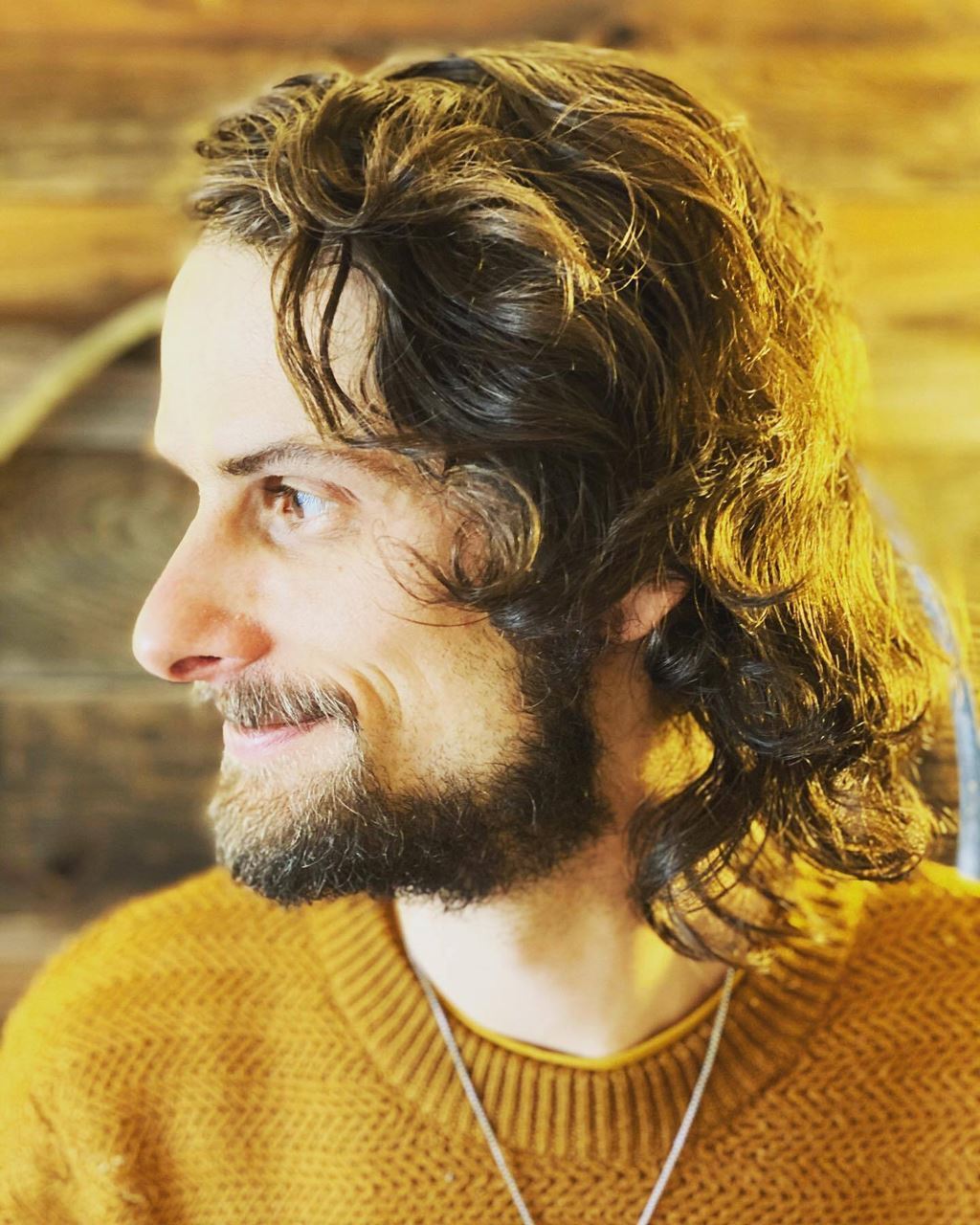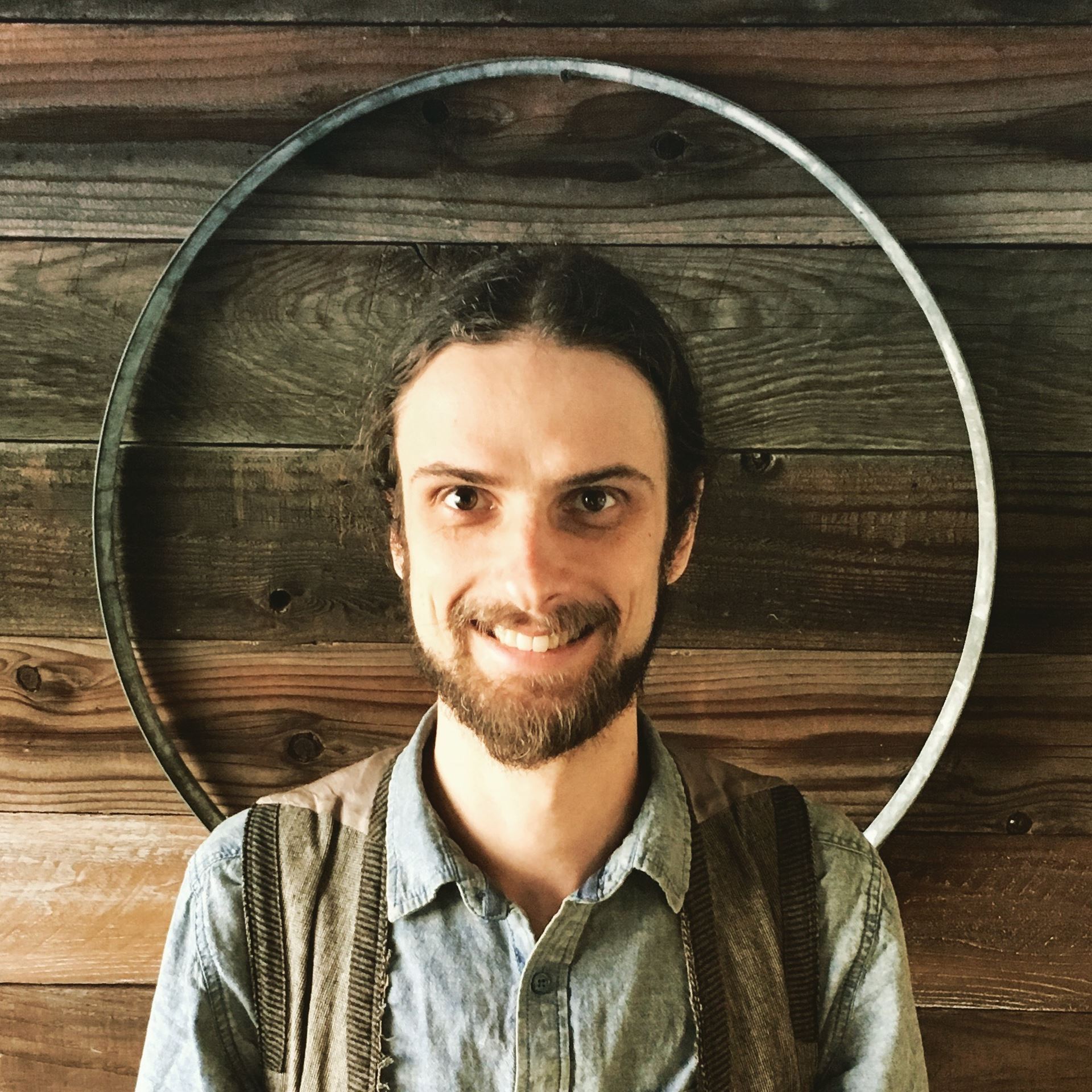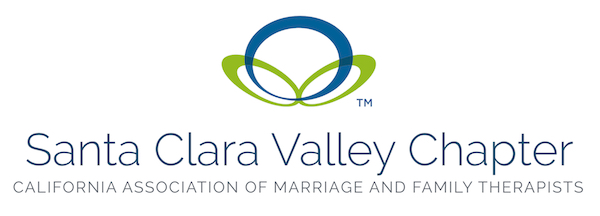
Back to Fall 2021 Newsletter
Dmitry Vulfovich, LMFT
The use of medicines to treat the psyche is not an original advent of Western civilization. In fact, for thousands of years, prehistoric societies have used psychedelic medicines to treat mental and spiritual illnesses throughout the world. Indeed, the effects of psychedelics are much more profound than those of modern psychopharmacology due to their ability to uncover the core materiel of a person’s psychology. Modern psychiatry is at a turning point as psychedelics gain recognition and legitimacy through clinical trials and public awareness. We are seeing a tremendous shift away from symptom reduction, and a move in the direction of healing trauma and transforming mental health on an experiential level.
The word shaman originally comes from Siberia and Central Asia, and actually derives from the Russian Tungus Saman, which could be translated into whole man or holy man. According to Terence McKenna (1992), shamanism is the “practice of the Upper Paleolithic tradition of the healing, divination, and theatrical performance based on natural magic, developed ten to fifty thousand years ago" (p. 4). Almost every indigenous culture has its own psychoactive medicine. Some of the major medicines include: psilocybin mushrooms and Salvia Divinorum in Southern Mexico, Iboga in Western Africa, the Peyote and San Pedro cactus in North America and Peru, and Ayahuasca in the Amazon Basin. Clinical research with psychedelics in the United States is now being allowed by the FDA in institutions across the country, as well as around the world, with such substances like MDMA, psilocybin mushrooms, Ibogaine, DMT and LSD to treat disorders ranging from alcohol addiction, depression, to post traumatic stress disorder (PTSD), to cluster headaches and obsessive-compulsive disorder (OCD).
How Psychedelics Work
While it is still being researched regarding the neurochemistry, psychological pioneers of psychedelic exploration like Stan Grof, MD and Ralph Metzner, PhD, often depict the experience as one of “consciousness expansion”. A simple way of understanding this term is by looking at the inverse definition, which is “restricted consciousness.” People are often restricted and limited by their self-perceptions or self-concepts. A person may be identified with a certain identity, sometimes due to traumatic events or systemic conditions, and the psychedelic experience has the potential to broaden the self-concept beyond the ordinary parameters. In other words, people have the opportunity to see themselves as something much greater and feel interconnected with all of nature and the cosmos itself. The most principal commonality in the psychedelic experience is ecstasy, which is described as an “experience that transcends duality; it is simultaneous terrifying, hilarious, awe-inspiring, familiar and bizarre” (McKenna, 1992).
A good metaphor for the process of transcending the ego is the hermit crab: as the crab grows it eventually finds its shell increasingly uncomfortable and restrictive because it has outgrown it. At that point, it has to move out and be vulnerable enough to find a new house. In some ways, the same processes occurs in human personal transformation. As a person is confronted with a limiting belief or identity, they have the opportunity to let go of certain identity structures in order to out-grow their ego. A person may find it no longer useful or meaningful to identify as a victim or may choose to no longer be involved with resentment towards their parental figures, for example. So, psychedelics are a powerful tool to aid and assist the process of personal and spiritual growth, as well as healing emotional pain and trauma along the way.
The psychedelic experience is not a walk in the park though: often times it can be scary, uncomfortable, and provocative. A common phenomenon, although with exceptions, is called an initiatory sickness. This happens when the physical body undergoes a type of shock and vulnerability experienced as nausea, disorientation, or dizziness (McKenna, 1992). This, in turn, is speculated to have an effect on the mind and its susceptibility to new information that it receives in the trance state. This is how the ego is broken down and real emotional and psychological changes can be made. Healing trauma requires an attentive and holding environment for the client to access core material and repair missed moments and incomplete processes deep within them. For this reason it is important to have a guide, therapist or indigenous leader to support this journey. The therapist or sitter can be very valuable in steering and creating a space for the client to explore the inner dimensions. If the client is feeling trapped in some emotional realm and cannot seem to get out, the therapist can be a friendly voice that interrupts the client’s mental rotation and bring them back to the present moment (Danforth, 2010).
Preparations for Psychedelic Therapy
Regardless of the increase in popularity of psychedelics, both precaution and sacredness need to be incorporated in the process. A proper therapeutic setting and intentional purposefulness, or set, must be in place before participating. The set is important, which is the primary component of this type of therapy refers to the traits, mind state, and expectations of the client regarding the experience (Danforth, 2010). An overall structure of the session should also be thoroughly discussed and agreed upon, starting with the rules and agreements between the therapist and the client such as: staying on the premises until all have agreed that the session is over; agreement that the client is not destructive to themselves, anyone else, or any property; agreement that no sexual activity between the client and therapist is allowed, as well as, agreement to follow all instructions from the therapist (Greer, 1998). One of the most basic preconditions in this type of therapy is having the client meet with the sitter, typically a psychotherapist, numerous times before the psychedelic therapy takes place in order to develop and maintain rapport and trust, which has been found to minimize the danger of adverse reactions to the medicine (Goldsmith, 2011).
Similar to dream work, the psychedelic experience can sometimes be scary and contextually difficult to understand. Especially for beginners, the experience can be disorienting and confusing. Supplemental psychotherapy, also known as pre-integration, is essential to begin psychedelic therapy. There are also various somatic grounding and body-oriented techniques taught to the client to optimize the therapeutic benefits of the medicines. One highly effective method of pre-integration therapy is called Focus-Oriented Psychotherapy (Focusing), founded by Eugene Gendlin, which emphasizes awareness, concentration, and acute receptivity in regards to the body’s innate wisdom. The pre-integration therapy helps the client to cultivate the faculties to localize their problem through meaningful somatic sensations and the ability to shift and signal particular changes in an assisted self study. This can be exceptionally effective with clients who are stuck and able to recognize their problem, but could not work through it completely during the ceremony.
This style of therapy is highly conducive for the psychedelic experience because it allows for the immediate felt sense of the experience to guide the therapy, and the preparation entails practicing how to orient inwardly and experience problems from a holistic bodily sense. A therapist involved in Focus-Oriented Therapy typically follows three main guidelines in relation to treatment planning. First, the therapist has to track and name the client’s felt sense of the issue. Second, they aid and assist the client to attune to their bodily sensations to allow the emergence of felt senses (Danforth, 2010). The third function of the therapist is to redirect the client from self-criticism or any attitudes that could hinder the momentum of their process (Danforth, 2010). Gendlin (1996) proposed a concept called absolute listening, which provides authentic gestures from the therapist that reflect understanding of clients’ inner process. Focus-Oriented Therapy essentially provides considerations and preparations for psychedelic therapy, and offers essential components of an overall meta-theme called the inner guide, which promotes self-trust in the client through the immediate felt sense of the body. This, in turn, allows clients to rely more deeply on their inherent intelligence for guidance during a psychedelic session, as well as identify the primary goals for the session (Danforth, 2010). Focusing was originally its own type of therapy and is effective as a somatic-experiential type therapy, but has been adopted in the literature for preparation for psychedelic use.
Mindfulness in general is an absolute prerequisite for psychedelic use, because the altered state can feel like a stormy ocean. Therefore, it is important to be able to ground and self-regulate during uncomfortable moments. Vipassanna, an ancient body scanning technique stemming from Buddhism, is an excellent complement to psychedelic healing. The technique teaches the meditator to develop the faculties of awareness by systematically sensing and tracking body sensations from head to toe. An equally important element to Vipassanna is the practice of equanimity, which is the ability to observe the entire field of matter in the body while neither suppressing nor expressing the feeling and sensations. Basically, the person is taught to “be with it.” This kind of preparation is extremely grounding and an excellent way to initiate and conduct the ceremony.
Post Integration: Applied Knowledge
Taking the time to process and integrate a psychedelics experience can determine how much actual psychological benefit a person can accrue from it. A trained therapist can experientially explore and revisit themes touched upon in the psychedelic experience in order to help the client make sense of the journey and its meaning. Visual content from a journey can be processed as modalities of the imagination, similar to parts work (IFS), Jung’s Active Imagination or Gestalt. The client can have the opportunity to organize components of the experience as metaphors that reflect inner dynamics and character patterns, instead of scary hallucinations.
Probably the most crucial aspect of the integration process is taking the meaning and insight and applying it into lived and practical changes in one’s life. People can of course have deep insights about themselves and the world, but the application is key. Often times, clients are encouraged to use symbols and key figures from the experiences as impetus into transformation. For example, if a person has overcome a difficult moment in their psychedelic experience as personified by a dragon or serpent, they may choose to start wearing clothes or jewelry with those totem animals, or incorporate those attributes into their dancing or other behaviors like speaking up for themselves. Clients can also continue to process the fruits of their journey and find meaningful applications for various life events, relationships, and mental challenges. If clients discover through a psychedelic experience that radical acceptance of their anxiety and depression allows them to feel peace experientially, they may experiment with ways to apply this allowing acceptance when they get stuck in resistance in other areas of everyday life.
Conclusion: The Inquiry is the Medicine
Psychedelics offer a psychosomatic inquiry into mental health disease, and with that inquiry, there is an opportunity for integrated healing and transformation out of suffering. Traditional psychiatry, although useful and necessary, pursues the utopian ideal of, eventually, getting rid of all mental diseases through the use of biomedical research, but this narrow view fails to address the subtle psychological and spiritual aspects of illness and natural living processes, which are completely incompatible with that pursuit (Capra, 1982). If we eliminate the symptoms without inquiring into the roots and mechanics of the way the disease manifests itself in the first place, on a process level, we run the risk of regenerating the disease in a new or repeated symptom. Indeed, there is an underlying unmet need or inner conflict behind the disease: to get rid of the surface manifestation of the conflict only will never lead to fulfillment and completion. Psychiatrists are also doing their best to alleviate pain and suffering in order to make the patient more comfortable through illness, which may seem like a good thing, but it may lead to a distorted view of health and a lack of meaning in regards to a person’s conglomerate philosophical orientation towards their body and how their lifestyle may impact their health (Capra, 1982).
In an attempt to integrate this difficulty, psychedelic-assisted therapy and modern holistic health disciplines consider disease as anything that limits the freedom or potential of the organism, and expands the cure for disease to include substance, activity, event, or a combination that helps to restore the biological functioning and harmony of an organism (Grossinger, 1990). It is essential to start looking at how stress causes disease in the body, as well as understanding the trauma-informed perspective and the imbalance of needs instead of an imbalance of chemicals in the brain.
 Dmitry Vulfovich is a Licensed Psychotherapist and Clinical Director at the Process Therapy Institute. His specialty is treating trauma and other mental health issues using a holistic body-oriented approach. Dmitry is a long time advocate and practitioner of ethno-botanical medicines and Zen healing arts. Dmitry is also a master teacher trainer at PTI, which involves experiential one-way mirror training and classes in the Process Model. Dmitry is a community leader, DJ, lecturer and workshop facilitator.
Dmitry Vulfovich is a Licensed Psychotherapist and Clinical Director at the Process Therapy Institute. His specialty is treating trauma and other mental health issues using a holistic body-oriented approach. Dmitry is a long time advocate and practitioner of ethno-botanical medicines and Zen healing arts. Dmitry is also a master teacher trainer at PTI, which involves experiential one-way mirror training and classes in the Process Model. Dmitry is a community leader, DJ, lecturer and workshop facilitator.
References
Capra, F. (1982). The turning point: Science, society, and the rising culture. New York, NY: Bantam Books.
Danforth, A. (2010). Focusing-oriented psychotherapy as a supplement to preparation for psychedelic therapy. Journal of Transpersonal Psychology, 41(2), 51-160.
Gendlin, E. T. (1996). Focusing-oriented psychotherapy: A manual of the experiential
method. New York: The Guilford Press.
Goldsmith, N. M. (2011). Psychedelic healing: The promise of entheogens for
psychotherapy and spiritual development. Rochester, Vermont: Healing Arts Press.
Greer, R. G. & Tolber, R. (1998) A method of conducting therapeutic sessions with
MDMA. Journal of psychoactive drugs, 30(4), 371-379.
Grossinger, R. (1990). Planet medicine: From stone age shamanism to post-industrial healing. Berkeley, CA: North Atlantic Books.
McKenna, T. (1992). Food of the gods: The search for the original tree of knowledge – A radical history of plants, drugs, and human evolution. New York: Bantam.
Back to Fall 2021 Newsletter
